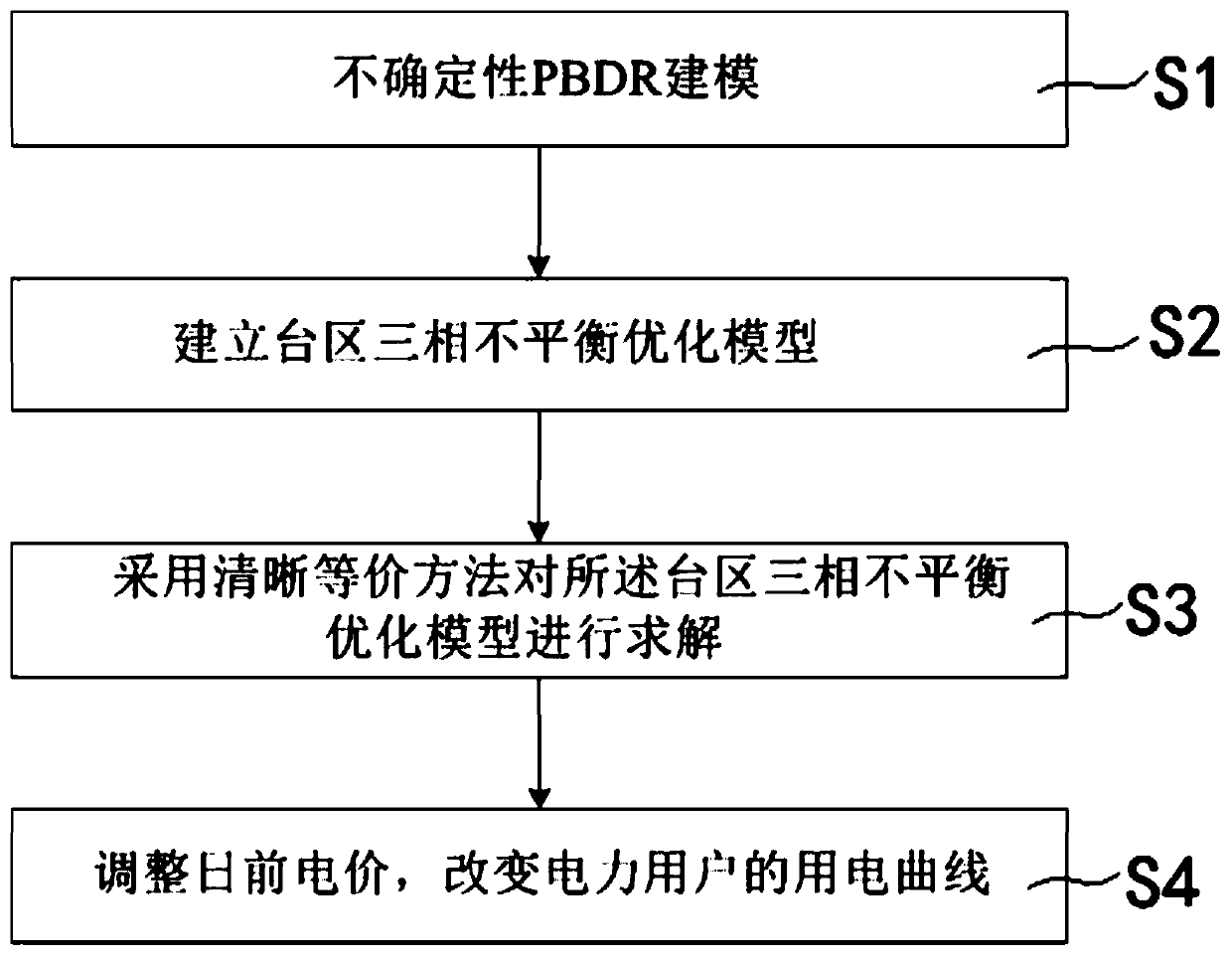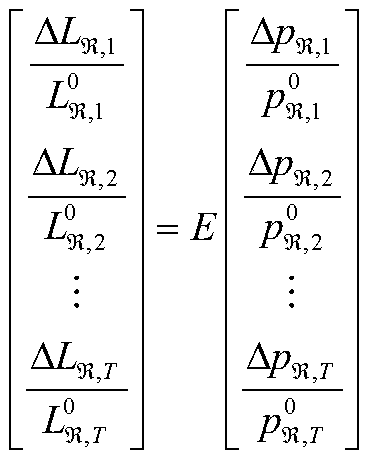Transformer area three-phase imbalance treatment method based on demand response
A demand-response, three-phase technology, applied in the direction of reducing the asymmetry of the polyphase network, eliminating/reducing the asymmetry of the polyphase network, and data processing applications, etc. The effect of controlling cost, reducing load peak-valley difference, and controlling electricity cost
- Summary
- Abstract
- Description
- Claims
- Application Information
AI Technical Summary
Problems solved by technology
Method used
Image
Examples
Embodiment 1
[0060] A three-phase imbalance control method based on demand response, such as figure 1 shown, including the following steps:
[0061] S1. Uncertainty PBDR modeling: Based on the relationship between the user's load variation and electricity price variation, and the uncertainty of different types of electricity price demand responses, a PBDR model is established;
[0062] S2. Establish a three-phase unbalance optimization model in the station area: based on the expected value of three-phase power consumption, the constraint conditions including power price constraints, power consumption constraints of power users, and power consumption satisfaction constraints are used, and the expected value of daily three-phase power consumption is used The minimum sum of squares of the difference with the average value of the three-phase power consumption expectation is the goal to establish a three-phase unbalance optimization model in the station area;
[0063] S3. Solve the three-phase...
Embodiment 2
[0066] A method for controlling three-phase unbalance in a station area based on demand response, comprising the following steps:
[0067] S1. Uncertain PBDR modeling: use the price-type demand elasticity matrix to represent the relationship between the user's load variation and electricity price variation, and establish a deterministic PBDR model; then obtain the different types of electricity price demand responses by establishing fuzzy chance constraints Deterministic, build a PBDR model:
[0068] S11. Use the price-type demand elasticity matrix to represent the relationship between the user's load change and electricity price change, and establish a deterministic PBDR model:
[0069]
[0070] Where E is the price-type demand elasticity matrix, T is the total number of time periods, in this embodiment 2, 24h is used as the time scale, and the interval between each time period is 1h, and the subscript A unique identifier for user access, for The initial power demand...
PUM
 Login to View More
Login to View More Abstract
Description
Claims
Application Information
 Login to View More
Login to View More - R&D
- Intellectual Property
- Life Sciences
- Materials
- Tech Scout
- Unparalleled Data Quality
- Higher Quality Content
- 60% Fewer Hallucinations
Browse by: Latest US Patents, China's latest patents, Technical Efficacy Thesaurus, Application Domain, Technology Topic, Popular Technical Reports.
© 2025 PatSnap. All rights reserved.Legal|Privacy policy|Modern Slavery Act Transparency Statement|Sitemap|About US| Contact US: help@patsnap.com



